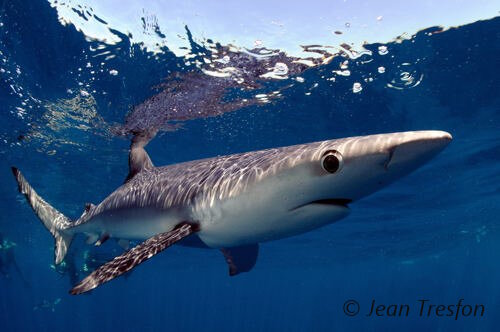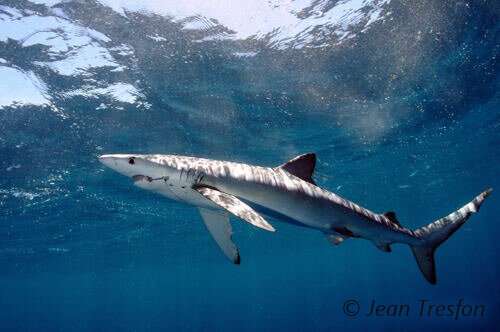Sealife guideThe blue sharkPrionace glauca
Last updated on 08/29/2024 at 12:21 AM
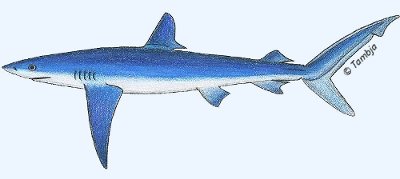
The blue shark (Prionace glauca)
Taxonomy
- Common name: Blue shark
- French name: Requin bleu, peau bleue
- Scientific name: Prionace glauca (Linnaeus, 1758)
- Family name: Carcharhinidae
- Order name: Carcharhiniformes
- Class name: Elasmobranchii
Description
The blue shark is a pelagic shark with a maximum size of about 12.5 feet in length and a weight of around 440 pounds.
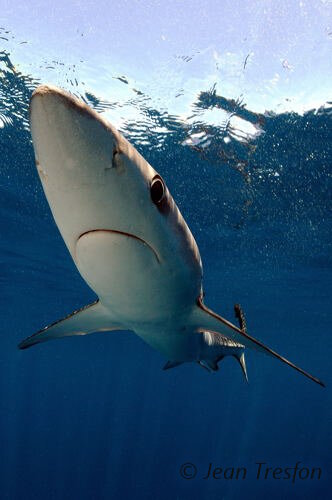
The blue shark has a long pointed nose !
The blue shark is characterized by its bluish coloration on the top side of its very slender body. It also has a long, pointed nose and long pectoral fins.
Geographic range
The blue shark is widely distributed in temperate and tropical waters across the world’s seas and oceans. It is likely the most widespread shark in the oceans, found almost everywhere except the cold waters of the polar oceans.
Blue shark migration is seasonal and depends on the distribution and abundance of their prey.
Habitat
Blue sharks can be found from the surface down to depths of over 1,150 feet. Since they prefer water temperatures around 54 to 68°F, their depth range varies accordingly. In tropical waters, where temperatures are higher, blue sharks are typically found at greater depths !
The blue shark is a pelagic and oceanic species that generally lives a solitary life offshore.
Diet
As a major predator, the blue shark plays a key role in maintaining the balance of the marine ecosystem. It primarily feeds on small pelagic fish, squids, pelagic crustaceans, and occasionally on seabirds or marine mammal carcasses. While it can feed during the day, it is more active in searching for food at night.
Reproduction
The blue shark is viviparous. After a gestation period of 9 to 12 months, the female gives birth to an average of 30 pups, and occasionally more than 100 in exceptional cases, each measuring 14 to 20 inches in length. Young blue sharks reach sexual maturity at around 4 to 6 years of age with lengths ranging from 5.9 to 7.2 feet !
The growth rate of the blue shark is among the fastest of any shark species.
Did you know ?
The blue shark is listed as many other marine species within The IUCN Red List of threatened species. The blue shark appears in the IUCN Red List since 2019 within the category Near Threatened !
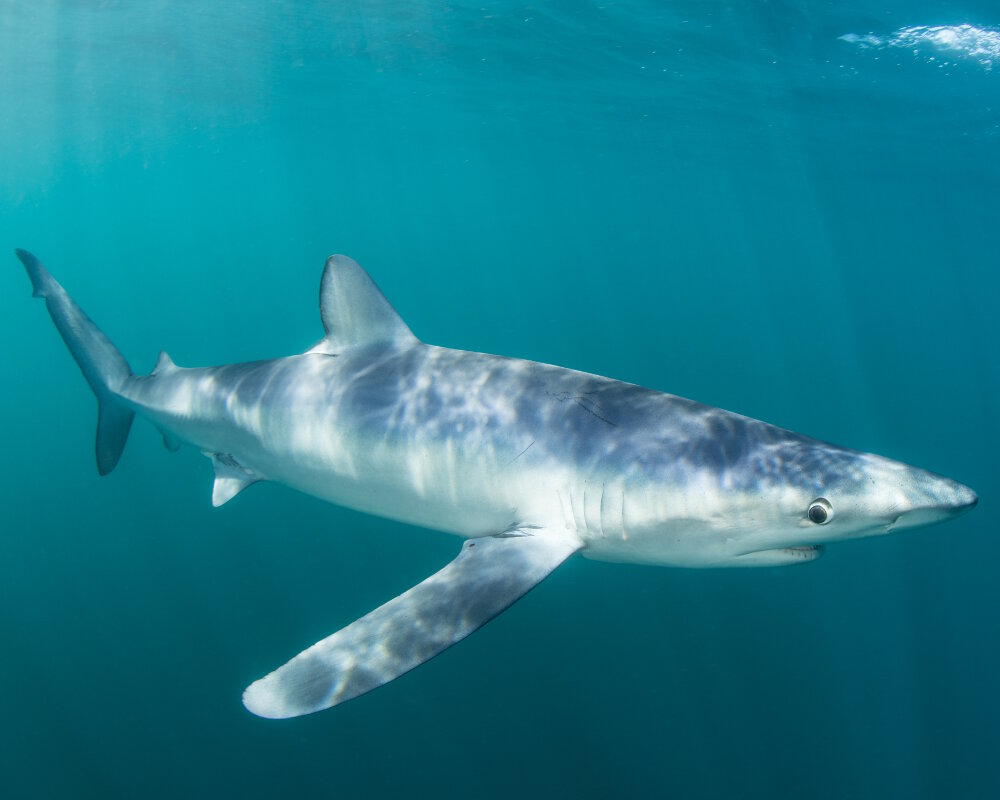
The blue shark (Prionace glauca) © Ethan Daniels | Dreamstime.com
Within the same family
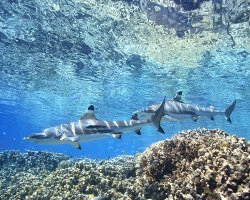
Blacktip reef shark
(Carcharhinus melanopterus)
(Carcharhinus melanopterus)
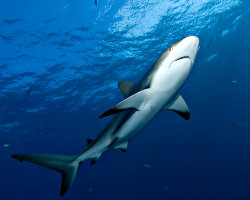
Caribbean reef shark
(Carcharhinus perezi)
(Carcharhinus perezi)
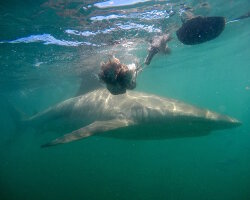
Copper shark
(Carcharhinus brachyurus)
(Carcharhinus brachyurus)
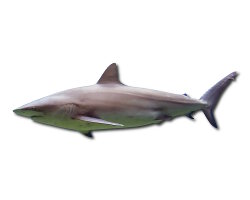
Dusky shark
(Carcharhinus obscurus)
(Carcharhinus obscurus)
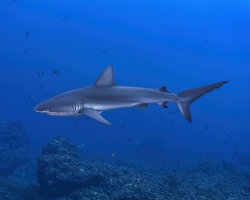
Galapagos shark
(Carcharhinus galapagensis)
(Carcharhinus galapagensis)
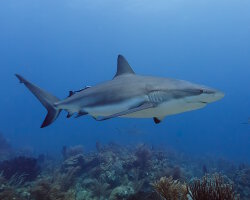
Grey reef shark
(Carcharhinus amblyrhynchos)
(Carcharhinus amblyrhynchos)
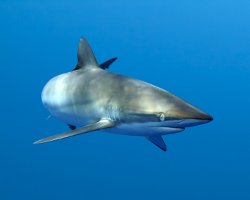
Silky Shark
(Carcharhinus falciformis)
(Carcharhinus falciformis)
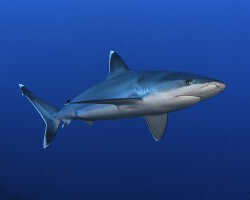
Silvertip shark
(Carcharhinus albimarginatus)
(Carcharhinus albimarginatus)
Discover also
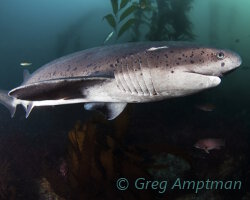
Broadnose sevengill shark
(Notorynchus cepedianus)
(Notorynchus cepedianus)
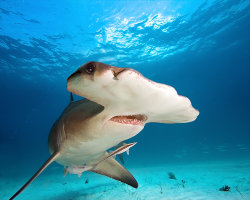
Great hammerhead shark
(Sphyrna mokarran)
(Sphyrna mokarran)
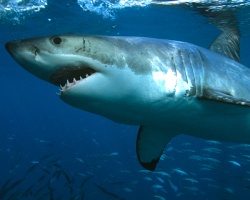
Great white shark
(Carcharodon carcharias)
(Carcharodon carcharias)
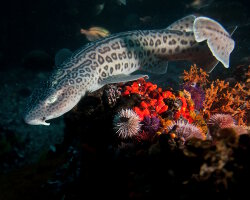
Leopard catshark
(Poroderma pantherinum)
(Poroderma pantherinum)
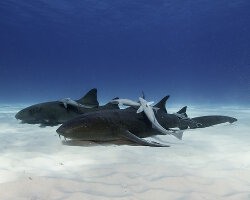
Nurse shark
(Ginglymostoma cirratum)
(Ginglymostoma cirratum)
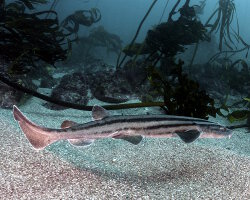
Pyjama shark
(Poroderma africanum)
(Poroderma africanum)
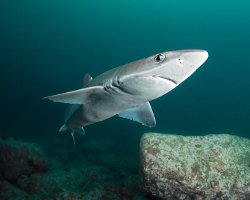
Spiny dogfish
(Squalus acanthias)
(Squalus acanthias)
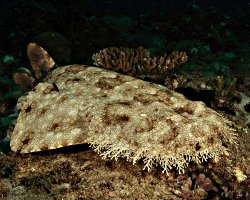
Tasselled wobbegong
(Eucrossorhinus dasypogon)
(Eucrossorhinus dasypogon)
Our latestUpdates

Wednesday, November 19th 2025
Tenerife island
Tenerife, the largest of the Canary islands, is a volcanic gem in the Atlantic ocean. It boasts an incredible variety of landscapes, from golden or black sand beaches to the subtropical forests of the Anaga mountains and the majestic Teide volcano, Spain's highest peak. With its picturesque villages, rich local culture and countless outdoor activities, Tenerife is a perfect destination for every type of traveler.

Saturday, November 15th 2025
Batz island
Located in the English Channel off the northern coast of Brittany, just a few kilometers from the town of Roscoff, Batz island is a true little haven of peace where you can enjoy its wild landscapes, unspoiled beaches and historical heritage.
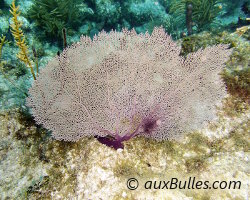
Friday, November 7th 2025
The common sea fan
The common sea fan, is a type of soft coral found in the warm, shallow waters of the Caribbean and the western Atlantic ocean. It grows in wide, fan-shaped forms that sway gently with the ocean currents, helping it catch tiny food particles drifting by. Its beautiful purple branches are covered by a thin living tissue that hosts tiny algae, which provide much of the coral's energy through sunlight.
Photo of the Day

Tortue de mer
(7 espèces)
(7 espèces)

